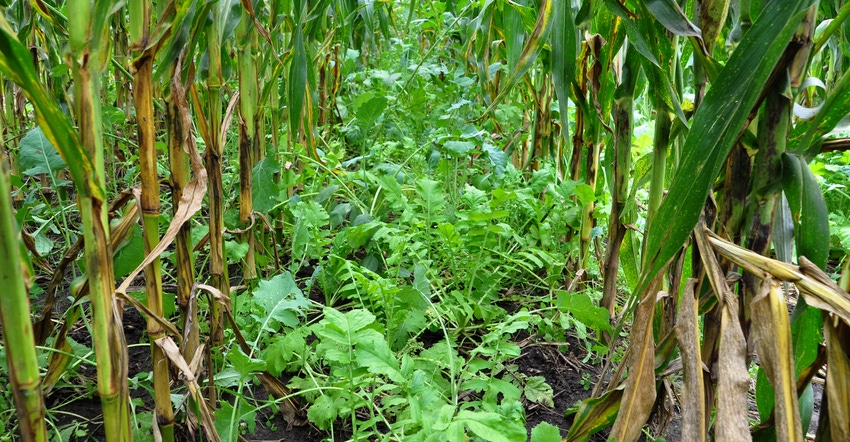August 3, 2022

It is time to consider options for planting cover crops.
Allowing a cover crop to take advantage of the remaining months of favorable weather conditions can protect the soil from erosion by wind and water, scavenge nutrients for future cash crops, feed the organisms in the soil food web, help prevent summer annual weeds from producing seed and winter annuals weeds from emerging, and possibly provide an opportunity for grazing.
Selecting a cover crop for your operation comes down to assessing your goals and desired management strategies, and considering if the herbicide applications made to the wheat crop may limit your options.
Cover crop goals
A goal such as weed suppression requires a cover crop that will emerge quickly and cover the soil surface to increase competition for light, water and nutrients, and reduce further emergence. Quick-emerging cover crops include oilseed radish, oats, sorghum-sudangrass and cereal rye.
Download our FREE cover crop guide: Cover crop best management practices
If adding nitrogen to the system is your goal, then planting a legume would be your best option. Legume choices include medium red clover, crimson clover, field pea, sweet clover and hairy vetch. The Michigan State University Extension factsheet, Cover crop choices following winter wheat, details specific options and planting recommendations.
Another option to access which cover crops will meet your goals is the Cover Crop Selector Tools from the Midwest Cover Crop Council. This interactive tool incorporates local climate information, soil characteristics and personal goals to help tailor your cover crop search. It also provides printable information sheets for species of interest.
Crop termination
Often, cover crops can be planted using a drill, planter or broadcast seeder. Larger-seeded species, such as rye, pea and sorghum-sudangrass, benefit from being placed in the soil profile, and therefore, a drill or planter are the best choices.
If you are looking for a cover crop that does not require termination, species or combinations of species such as oilseed radish, mustards, oats and sorghum-sudangrass may be good choices, as they will not survive a typical Northern winter. Cover crops likely to survive winter include red clover, crimson clover, winter pea, cereal rye and annual ryegrass.
All of these covers will require termination via tillage or herbicides in spring (see Important reminders for chemically terminating cover crops). Certain cover crops, such as annual ryegrass, with their extensive root system, can require multiple termination efforts (see Tips for terminating an annual ryegrass cover crop) and may be more suited to an experienced cover crop user.
Limitations due to herbicide
Depending on the species, cover crops are sometimes, but not often, listed in the crop rotation intervals on the herbicide labels. These recommendations could be used to conservatively assess any risks to seeding red clover following wheat.
For other species, there are recommendations recently released from North Dakota State University. Their research shows the herbicide Widematch (applied in spring, clopyralid and fluroxypyr, Group 2) had the greatest potential for injury (for cover crops planted about two months after herbicide application), with radish, turnip and rapeseed being 21% to 50% damaged, and field pea and lentil being 51% to 100% damaged.
Related: Cover crop best management practices
Spring applications of Clarity (dicamba, Group 2) also showed injury potential on radish, lentil, flax and barley at 21% to 50% injury, and turnip at 51% to 100% injury. The full chart listing the risk of injury can be found in the North Dakota State University article, How do wheat herbicides affect fall cover crops?
Hill is part of the multidisciplinary team in Michigan State University’s Plant and Pest Diagnostics.
Source: Michigan State University, which is responsible for the information provided and is wholly owned by the source. Informa Business Media and its subsidiaries aren't responsible for any of the content contained in this information asset.
You May Also Like




